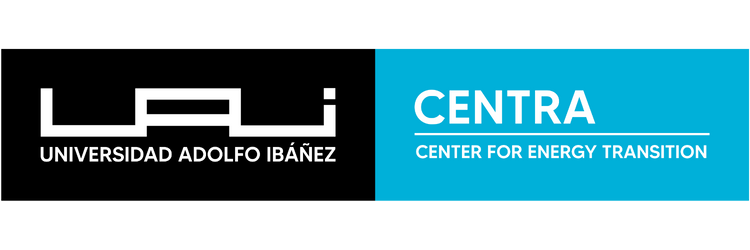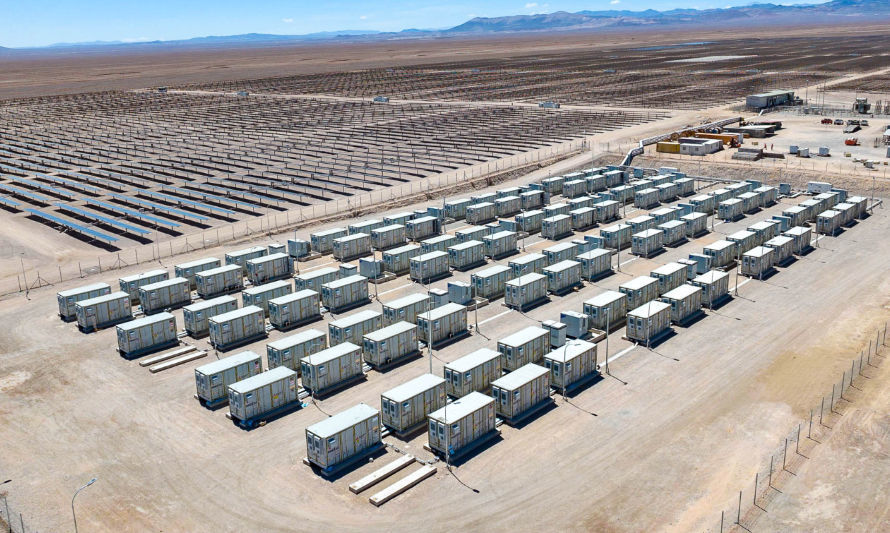BESS are a Strategic Component for the Energy Transition
July 31, 2025
Battery Energy Storage Systems (BESS) are emerging as a strategic pillar in Chile’s energy transition. In this interview, Bernardo Severino, Head of Research at the Center for Energy Transition (CENTRA) of the Faculty of Engineering and Sciences at UAI, analyzes the rise of utility-scale projects, regulatory progress, the barriers to widespread adoption, and the key role that academia and innovation play in accelerating their deployment.
How would you describe the Chilean BESS market?
The Chilean BESS market is undergoing a phase of accelerated growth, driven mainly by utility-scale projects. According to ACERA statistics from June 2025, the installed capacity in operation reaches 999 MW / 3,995 MWh, with an additional 574 MW / 2,388 MWh in testing and 4,053 MW / 17,816 MWh under construction. This is complemented by 8,092 MW of already approved projects and another 15,164 MW currently undergoing environmental qualification, reflecting a large and ambitious project pipeline.
In contrast, BESS adoption in the industrial, commercial, and residential sectors remains in its early stages. Although interest is growing—especially among large industrial and commercial consumers looking to reduce peak-hour energy costs—actual implementation remains limited. In the residential sector, some customers are exploring storage solutions as backup during outages, but such cases remain rare and generally lack regulatory incentives or suitable tariff schemes. Overall, current deployment is concentrated in large-scale applications, with distributed uses still incipient.
According to data from the National Energy Commission (CNE) published in June 2025, the installed BESS capacity connected to the grid is projected to reach 2,213 MW by the end of 2025 and 2,248 MW by February 2026, with an average duration exceeding 4 hours. Including projects under testing and construction, the total pipeline surpasses 6,100 MW, indicating accelerated sector growth. This expansion will consolidate BESS as a strategic asset to integrate renewables, reduce curtailment, and strengthen the reliability of the national power system.
In terms of public policy, is there regulation to support BESS deployment in Chile?
Chile has made progress in building a regulatory framework to enable and encourage BESS deployment, although important gaps remain. The National Energy Policy sets explicit storage targets: 2,000 MW by 2030 and 6,000 MW by 2050, which sends a clear long-term priority signal.
Legally, Law 20.936 (2016) incorporated storage into the General Law of Electric Services, followed by decrees allowing BESS participation in the spot market, ancillary services, and transmission planning.
A key milestone was the passage of Law 21.505 in 2022, which allowed BESS to participate in the capacity market, opening a new revenue stream via capacity payments. Later, in 2024, the National Electrical Coordinator updated technical criteria for capacity recognition, detailing how firm capacity is evaluated based on duration and availability. These changes aim to provide clearer investment signals and facilitate effective integration of storage into energy sufficiency mechanisms.
More recently, steps have been taken to incorporate storage into distributed energy schemes. In June 2025, the Superintendence of Electricity and Fuels (SEC) issued a major update to technical criteria for PMGD (small-scale distributed generation) interconnection, including specific guidelines for projects combining storage with time-block operation and zonal grid connection. These criteria formalize BESS participation in PMGD projects, addressing aspects such as metering, coordinated dispatch, and installed capacity validation. This is especially relevant given the increasing number of PMGD solar projects that could benefit from storage to stabilize grid injection and shift energy from peak generation to high-value periods, while also reducing curtailment.
What are the main barriers to widespread BESS adoption in Chile?
Despite the global trend of declining battery costs, widespread adoption of BESS in Chile still faces several challenges. In the utility segment, one major barrier is the lack of clarity regarding dispatch and commercial operation of storage systems. There is also uncertainty about how hourly market prices will behave as BESS penetration increases. If price volatility decreases due to greater arbitrage capacity, economic returns for new projects could be affected.
In the residential and commercial sectors, the challenges are different. While there is growing interest in combining BESS with solar systems, costs remain high compared to pure PV projects, which already offer attractive returns without batteries. The equation shifts in areas with high outage risk, where storage is increasingly considered a resilience solution—both individually and at the community level. However, even in these cases, the lack of tariff incentives and a regulatory framework that values resilience limits broader adoption.
To overcome these challenges and accelerate BESS deployment—especially in the distributed segment—it is crucial to modernize distribution sector regulations. Today, the regulatory framework is designed for passive networks, lacking mechanisms that enable or technically recognize distributed resources such as BESS or the storage potential of electric mobility. For example, it is currently impossible for an electric vehicle to deliver energy back to the grid (V2G), despite the technology being available.
Enabling such use cases requires rethinking key aspects such as remuneration, tariff structures, the role of distributed energy resources, and commercialization. It also involves upgrading networks with digital capabilities—advanced metering, automation, real-time monitoring—which are currently limited. Without modern grids and enabling regulations for active operation, distributed storage cannot scale beyond pilot programs.
Can you mention a flagship BESS project in Chile?
The “BESS del Desierto,” developed by Atlas Renewable Energy in María Elena (Antofagasta Region), is the first large-scale standalone storage system in Chile and Latin America. Commissioned in 2025 on public land, it has a power capacity of 200 MW and 800 MWh (4-hour discharge), making it the region’s largest battery project.
This project provides key lessons for future developments: it offers hands-on experience in large-scale construction, integration, and operation—including public land contractual aspects; delivers real data on cost, performance, and risk; and provides regulators with useful insights on connection, environmental permitting, licensing, and remuneration models.
Will batteries be the predominant solution for energy storage?
BESS will remain the dominant storage solution in the short and medium term, but not the only one. Centralized planning models, such as those used in the Long-Term Energy Planning Process (PELP), show that BESS will share space with long-duration energy storage (LDES) technologies, which are more cost-effective for addressing extended periods of renewable shortfall—so-called “solar” or “wind droughts”—where 4 to 6 hours of storage is not sufficient.
What role does academia play in BESS development in Chile?
Academia and research centers are playing a key role in the development of BESS in Chile by generating applied knowledge, promoting innovation, and contributing to public policy design. In particular, the Center for Energy Transition (CENTRA) at Universidad Adolfo Ibáñez has positioned itself as a key player, addressing this technology from multiple dimensions.
On one hand, it leads research and pilot projects that adapt technologies to local conditions—such as the project led by Atamostec with support from CORFO, focused on repurposing EV batteries for stationary storage. This initiative has also led to the creation of startups like YUZZ, dedicated to assembling BESS units using recovered batteries.
In parallel, CENTRA provides technical-economic analyses that help shape regulatory and market development. Its collaboration with EDF Chile is noteworthy, where it has evaluated the contribution of long-duration BESS to the national power system, along with its active participation in public debates on topics such as Virtual Power Plants.
It also develops tools such as platforms for modeling and visualizing distributed energy resources (DER), supporting planning and evaluation for battery integration at the distribution level.

